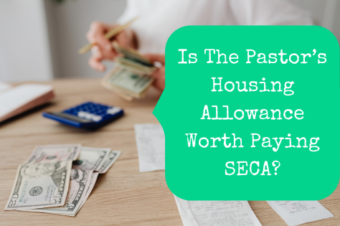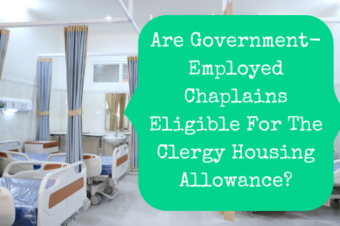I recently had a friend run some reports on my website to see how people are finding me. One of the most popular things that people search for, I learned, is “minister housing allowance calculator.” Now, I’ve written a lot about the clergy housing allowance, how to take one in retirement, what to do if you take too much, and things like that.
But people weren’t looking for articles about the minister housing allowance. They were looking for a calculator. They were saying, “C’mon, Amy, don’t just tell me how to do it. Give me the tools to actually do it!”
And I’m so obedient that I did just that. You asked for it, and now you have it:
The Pastor’s Wallet Housing Allowance Calculator
You can follow that link to try it out or just click on it from the menu at the top of this website.
How To Use The Minister Housing Allowance Calculator
It’s pretty easy to use. There are a bunch of categories of expenses that are covered under the pastoral housing allowance. All you have to do is input how much each category costs for you. Not every category will apply, so just use the ones that fit your situation. This is what it looks like:

For example, if you live in a parsonage, you won’t have anything to put into the Mortgage Payment or Rent categories. If you do live in a parsonage, only add in the expenses that you pay yourself. If your church pays your water bill, you can’t claim that as a part of your cash housing allowance.
At the bottom, there will be a total that shows your anticipated housing expenses for the year. It’s pretty hard to anticipate everything exactly and claiming too small of a housing allowance can lead you to pay taxes unnecessarily. So, it is commonly recommended to request about 10% more than your expected expenses to cover surprise expenses. The Pastor’s Wallet Minister Housing Allowance Calculator calculates that for you too.

Minister Housing Allowance Limitations
This calculator helps you calculate your housing expenses for the year. However, you may not be able to claim the whole amount as a clergy housing allowance. It is important to remember that the housing allowance is limited to the least of:
- the amount actually used to provide or rent a home;
- the fair market rental value of the home (including furnishings, utilities, garage, etc.);
- the amount officially designated (in advance of payment) as a housing allowance; or
- an amount which represents reasonable pay for your services.
So, before requesting your housing allowance based on your anticipated expenses, you need to figure out if they are lower or higher than the fair market rental value of your home. You can read all about how to do that here.
Then, once you figure out how much you can claim you need to get it officially designated. If your church doesn’t have it in writing somewhere that you’re getting a housing allowance, then you’re not getting one. Everything they give you will be considered taxable income. Do your calculations and then make sure your church makes it official.
Try out the calculator and let me know what you think. I hope you find it helpful!
Is there anything else you wish I had on this website? Let me know in the comments or by emailing amy@pastorswallet.com.













